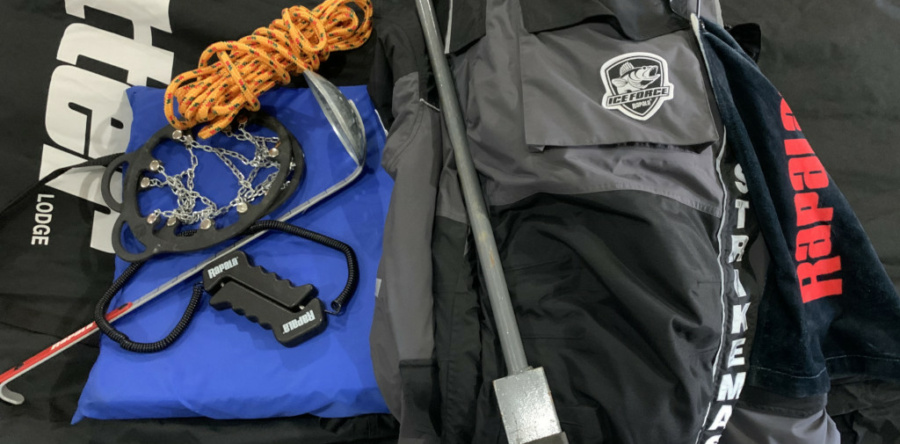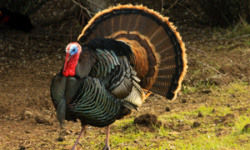Every year, many anglers can’t wait to tackle early ice to work the first hot bite. If you want to set the hook on some fresh-ice fish, then here are a few items I consider must-haves.
First, own and bring an ice chisel. When used properly, you can quickly check ice conditions as you venture out. Knowing the condition of the ice you are standing on is key to keeping you “on the lake” and not in it!

Walking onto new ice and holding the ice chisel near the top with the strap over my hand, I drive the chisel down into the ice with a heavy blow. On a solid hit the chisel will penetrate over 3 inches into solid ice. I know this because I have tested and checked many times. This is an important step for you: Learn what damage one heavy blow of your chisel does. Take your chisel and drive it into the ice near shore and see just how far your chisel has penetrated. I feel confident that if the chisel doesn’t go through on one solid hit to the ice, then neither will I. As I progress and move farther out on the ice, I continue this testing – paying close attention for freeze lines where the ice may have formed at different times. Cautiously approach these areas and never step beyond the points you have checked.
 My second most important tool is something to accurately check ice thickness. I want to measure the ice thickness and see how much it varies so I’ll know where to stop. I bent my ice scoop to a 90-degree angle and marked in 1-inch increments on the handle to check ice thickness. A tape measure can work but oftentimes when using a chisel the bottom of the ice hole breaks out, thus making it harder to get an accurate reading.
My second most important tool is something to accurately check ice thickness. I want to measure the ice thickness and see how much it varies so I’ll know where to stop. I bent my ice scoop to a 90-degree angle and marked in 1-inch increments on the handle to check ice thickness. A tape measure can work but oftentimes when using a chisel the bottom of the ice hole breaks out, thus making it harder to get an accurate reading.
Third, have some sort of chains, cleats, or other traction devices attached to your feet. This new ice, especially without any snow on top, is very slippery and these devices will help keep you upright and avoid slips or falls.
 Staying upright, checking as you go, and knowing the condition of the ice you are standing on will greatly improve your chances of staying out of the water, but there are a few more safety items I carry in case something goes wrong. I wear ice fishing bibs and a coat that will help keep me floating if I should happen to fall through. I have ice picks around my neck or in my pocket to help drag myself out of the hole if I break through the ice and into freezing water.
Staying upright, checking as you go, and knowing the condition of the ice you are standing on will greatly improve your chances of staying out of the water, but there are a few more safety items I carry in case something goes wrong. I wear ice fishing bibs and a coat that will help keep me floating if I should happen to fall through. I have ice picks around my neck or in my pocket to help drag myself out of the hole if I break through the ice and into freezing water.
 There are other items you can bring to help you rescue someone else who has broke through the ice. A throwable floating boat cushion and a long rope with a loop tied on the end could help save someone else who ventured onto unsafe ice.
There are other items you can bring to help you rescue someone else who has broke through the ice. A throwable floating boat cushion and a long rope with a loop tied on the end could help save someone else who ventured onto unsafe ice.
Ice is never 100 percent safe, but testing ice frequently while venturing out will greatly reduce your chances of getting wet!
Good luck fishing and stay safe.






